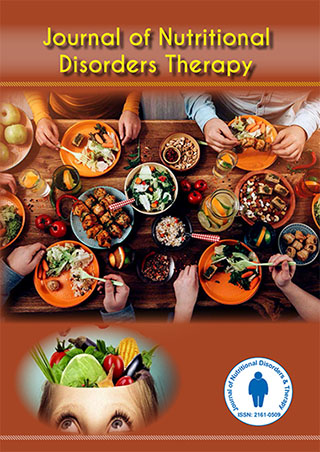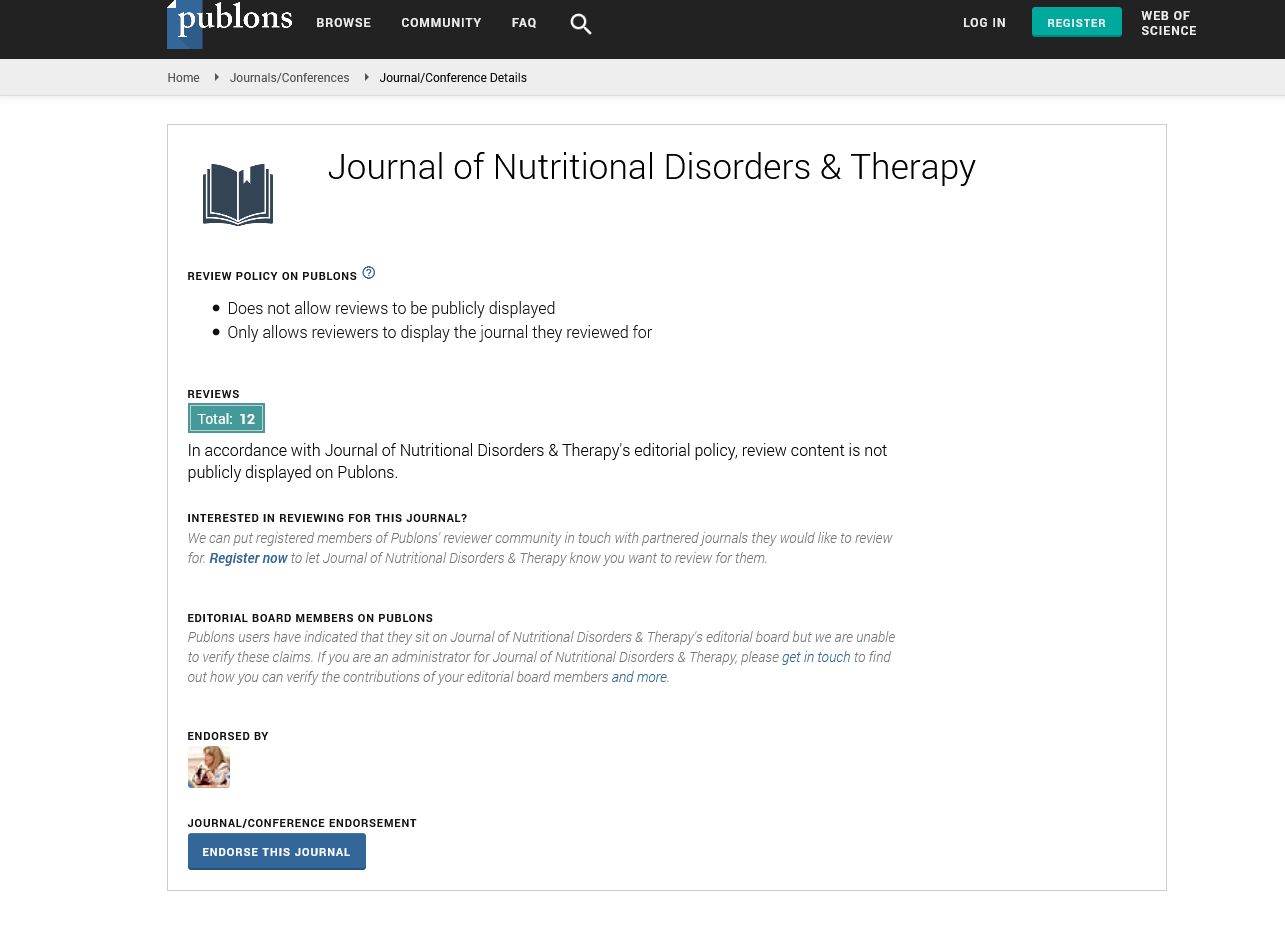Indexed In
- Open J Gate
- Genamics JournalSeek
- Academic Keys
- JournalTOCs
- Ulrich's Periodicals Directory
- RefSeek
- Hamdard University
- EBSCO A-Z
- OCLC- WorldCat
- Publons
- Geneva Foundation for Medical Education and Research
- Euro Pub
Useful Links
Share This Page
Journal Flyer

Open Access Journals
- Agri and Aquaculture
- Biochemistry
- Bioinformatics & Systems Biology
- Business & Management
- Chemistry
- Clinical Sciences
- Engineering
- Food & Nutrition
- General Science
- Genetics & Molecular Biology
- Immunology & Microbiology
- Medical Sciences
- Neuroscience & Psychology
- Nursing & Health Care
- Pharmaceutical Sciences
Commentary - (2025) Volume 15, Issue 1
A Practical Approach to Assessing Cachexia Risk in Cancer Settings
Julio Sagae*Received: 25-Feb-2025, Manuscript No. JNDT-25-29115; Editor assigned: 27-Feb-2025, Pre QC No. JNDT-25-29115 (PQ); Reviewed: 13-Mar-2025, QC No. JNDT-25-29115; Revised: 20-Mar-2025, Manuscript No. JNDT-25-29115 (R); Published: 27-Mar-2025, DOI: 10.35248/2161-0509.25.15.319
Description
Cachexia affects a substantial proportion of individuals with advanced cancer. Unlike starvation, it involves metabolic alterations that cannot be reversed solely by nutritional supplementation. The syndrome leads to progressive functional decline, treatment intolerance and increased mortality. Nevertheless, the lack of a universally adopted screening protocol contributes to its late recognition in clinical practice.
While several assessment methods exist, they vary in complexity and applicability. Some require specialized equipment or extensive laboratory resources, which may not be accessible in all healthcare environments. Thus, a screening tool that is both practical and evidence-informed is essential to detect cachexia risk before its full manifestation.
Cancer cachexia
Cachexia is characterized by the following features such as involuntary weight loss, muscle atrophy (with or without fat loss), Inflammation, Reduced food intake, Impaired functional status.
The syndrome occurs through a combination of reduced nutrient intake, metabolic imbalance and systemic inflammation. Cytokines such as interleukin-6 and tumor necrosis factor-alpha contribute to muscle catabolism. Mitochondrial dysfunction, hormonal dysregulation and altered protein metabolism further exacerbate muscle degradation.
Clinical applications
The tool can be used at the time of diagnosis and at regular intervals during treatment. It is particularly useful for patients undergoing chemotherapy or radiation, where nutritional demands and inflammatory responses are heightened.
Intervention should be multidisciplinary, involving dietitians for nutrition therapy, physical therapists for resistance exercise programs, oncologists for anti-inflammatory or anabolic medications, psychologists for addressing anorexia and fatigue-related distress.
By scoring patients periodically, the tool helps clinicians detect worsening trends and adjust treatment accordingly.
Advantages of the proposed tool
Simple and accessible: Uses readily available data and does not require advanced technology
Objective and subjective measures: Combines laboratory markers with functional and nutritional indicators
Modifiable: Can be adapted to institutional resources or patient populations
Supports early intervention: Detects risk even before severe wasting occurs
Limitations
Some elements may be influenced by comorbid conditions unrelated to cancer. CRP may not always be elevated in cachexia, especially in non-inflammatory tumors, MUAC can be less reliable in individuals with fluid retention or obesity and Periodic calibration of scoring thresholds may be needed based on population-specific data. Despite these limitations, the overall design remains feasible for widespread clinical use.
Future directions
Validation studies are necessary to determine the tool’s predictive accuracy and clinical utility. Comparing outcomes such as survival, treatment completion rates and quality of life in screened versus unscreened populations would provide further insights. Integration into electronic health records can streamline its use and improve documentation.
Training modules for healthcare workers, along with clinical protocols for intervention based on scores, will help in consistent adoption. Additionally, the tool may be modified for use in other cachexia-prone populations such as those with Chronic Obstructive Pulmonary Disease (COPD) or heart failure.
Cachexia significantly affects clinical outcomes in cancer patients, yet it remains underdetected in many healthcare settings. The proposed screening tool offers a structured and accessible method to identify individuals at risk. By incorporating indicators of weight change, food intake, inflammation, function and muscle mass, it allows for timely and individualized intervention strategies. Widespread use of such a tool may contribute to improved patient outcomes, better treatment adherence and enhanced quality of life for individuals undergoing cancer therapy.
Citation: Sagae J (2025). A Practical Approach to Assessing Cachexia Risk in Cancer Settings. J Nutr Disord Ther. 15:319.
Copyright: © 2025 Sagae J. This is an open-access article distributed under the terms of the Creative Commons Attribution License, which permits unrestricted use, distribution, and reproduction in any medium, provided the original author and source are credited.

